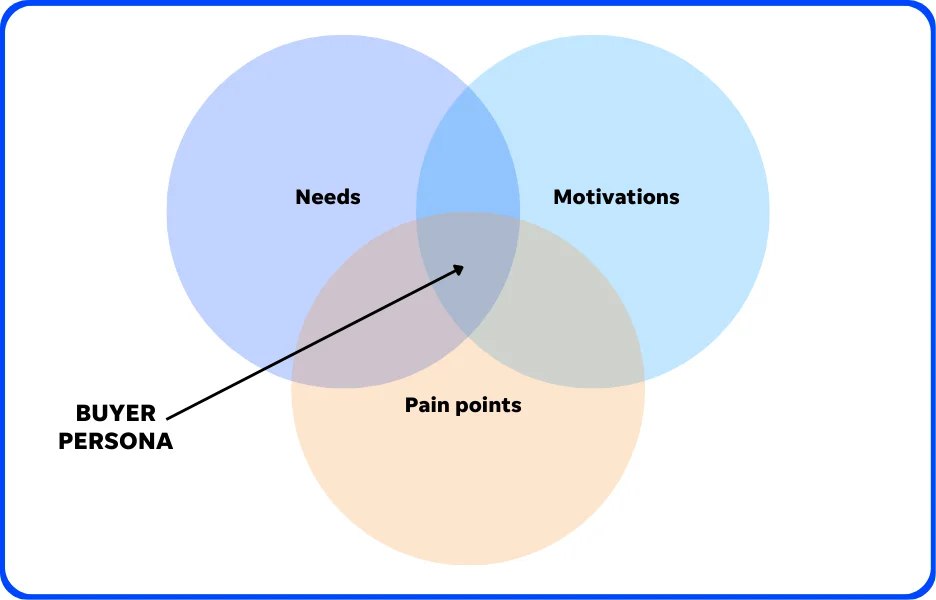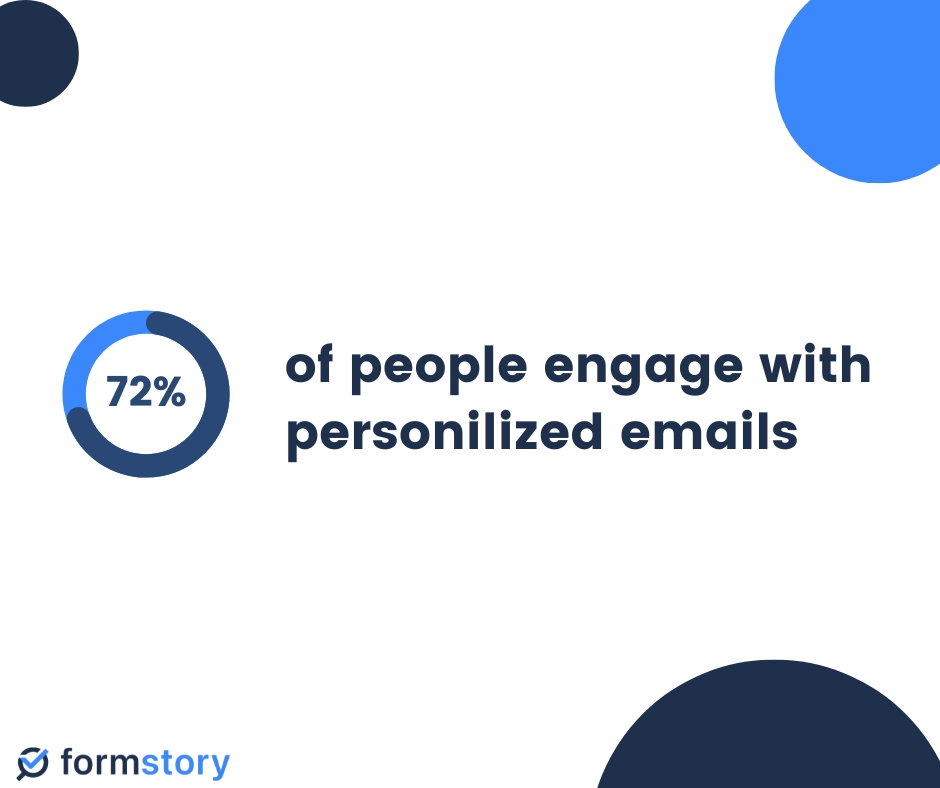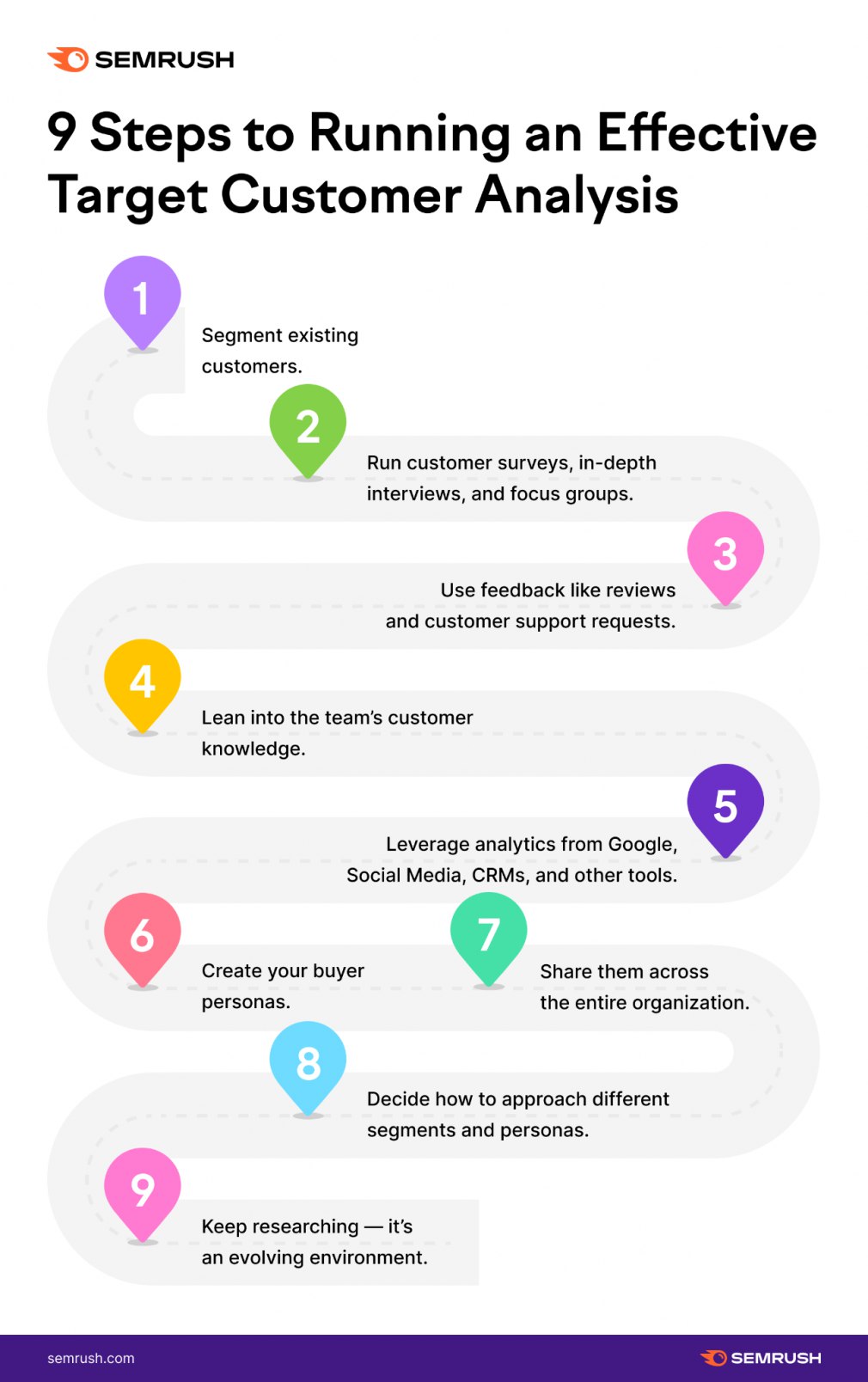Finding your ideal customers is like going on a blind date; you never know what you’ll get. Connecting with B2B buyers feels like guesswork without insight into who they are. How do you build relationships when you don’t know them?
This is where B2B buyer personas come in. Detailed customer profiles of your target audience help you move from shooting in the dark to having a real conversation. Buyer personas are your inside source, revealing the beliefs, behaviors, and motivations that drive purchasing decisions.
With this kind of insider knowledge, your marketing suddenly gains focus. Ads, offers, and content all hit the mark because they genuinely meet your customers’ needs, ensuring that your initiatives are not just seen but felt, creating a real connection. Sales conversations become more productive by addressing their actual pain points, making every interaction not just a pitch, but a solution to their unique challenges. This personalized marketing strategy upgrades you from a general broad-spectrum approach to a more refined, customer-centric methodology.
This guide will walk you through creating ideal B2B buyer personas that transform how you connect with your target customers. Let’s start learning the secrets to truly knowing your audience.
A buyer persona is a precise fictional representation of your ideal target customer. It includes specific demographic, behavioral, and psychographic attributes that describe them.
B2B buyer personas focus on business professionals who purchase products and services on behalf of a company. They aim to capture the key characteristics of those involved in the organizational buying process.
Robust B2B personas represent an archetype of your customers rather than actual individuals. They synthesize insights from market research, customer interviews, surveys, and user behavior analysis. The result is a realistic customer profile that captures the essence of a key buyer segment.

Image source: wordstream.com
While both B2B and B2C buyer personas aim to represent target customers, the specific attributes and buying behaviors differ significantly between a business and a consumer audience. Some key variances include:
Purchasing purpose: B2C personas buy products or services for personal consumption, while B2B buyer personas represent professionals purchasing for business or work needs.
Decision drivers: B2C purchases are often emotionally driven, based on brand loyalty or status. B2B buyers, on the other hand, make logical, objective decisions weighing business factors like costs, scalability, and ROI.
Buying process: B2C typically has shorter decision cycles, while B2B involves longer, complex sales cycles with multiple stakeholders that influence the final call.
Purchasing authority: For B2C, the purchasing power usually sits with one individual. For B2B, the decision involves several people across teams like IT, finance, and operations.
Key attributes: B2C buyer persona looks at demographics like age, gender, and location. B2B focuses more on job roles, seniority level, department, and industry.
Marketing tactics: B2C uses mass media like social, TV, and billboards. B2B takes a targeted approach through channels like email, events, and account-based ad campaigns.
Both represent target customers, but the data points, buying journey, and marketing strategies differ extensively based on whether you sell to individual consumers or business organizations.

Image source: contentmarketing.io
An effective B2B buyer persona should include the following:
In B2B marketing, the behavioral drivers of buyers are crucial to understand. This segment delves into the motivations and actions that propel a B2B buyer’s decision-making process. These encompass your customers’ goals, challenges, and motivations. What are they trying to achieve? How will your product or service help them accomplish their business objectives? Understanding these needs will help you craft a successful B2B customer profile.
Every B2B buyer faces challenges that can slow down or complicate their purchasing decisions. By identifying these obstacles, companies can figure out how to help buyers overcome them. This not only makes the buying process easier but also helps build trust and a good relationship with the customers. Take into consideration the hesitations and concerns of your customers regarding your offering. How do they perceive your product? What risks or roadblocks could prevent them from purchasing? Addressing these transparently can reassure customers and accelerate sales cycles.
Your customers approach the buying process with certain expectations and preconceived notions. Are they looking for an innovative solution or a trusted, established brand? Are they methodical researchers or quick decision-makers? Tailoring your content and interactions to align with their mindset will improve engagement.
Investing time in developing robust buyer persona offers immense value across B2B marketing and sales activities. Detailed B2B customer personas enable marketers to tailor their messaging and strategies to specific audience segments. When you understand the specific needs, challenges, and goals of different buyer personas ensures that marketing efforts are not only more relevant but also more effective. Sales teams also benefit from having a well defined buyer persona. They provide sales professionals with a clear picture of their customers, enabling them to personalize sales pitches and address specific customer concerns more effectively. This improved sales approach enhances overall sales effectiveness and contributes to building long-term customer relationships.
Statistics about companies that use personas

Image source: red-fern.co.uk
Some of the key benefits of B2B buyer personas include:
Accurate buyer personas help you clearly visualize your ideal customers in B2B market. Rather than a broad, generic audience, you can define the specific titles, pain points, and attributes of your best-fit accounts; this enables genuine tailored marketing. Research shows that 72% of B2B buyers expect personalized engagement tailored to their needs.

With a detailed customer profile, you can create highly targeted campaigns. For example, personalized emails based on customer personas generate around 18x more revenue than traditional bulk email blasts. When targeting cold leads, persona-based content drives almost 6x more engagement.
B2B buyer persona reveals the fine distinction of how different roles research solutions, their motivators, and who influences decisions; this helps you tailor a customer journey mapping that guides each persona through their buying process.
Accurate B2B buyer personas allow you to craft and personalize content on landing pages that directly speak to the goals and challenges of each customer persona. This contextual content performs far better, with persona-based emails delivering double the open rates and 500% higher click-throughs.
When it comes to product development and sales conversations, B2B buyer profile play a pivotal role. They inform the development process by highlighting the specific needs and preferences of the target market, allowing businesses to tailor their products or services to meet these requirements. With personal insights, sales teams can have more meaningful conversations. They understand pain points to focus on and can tailor solutions based on what resonates most with each customer role.
Leveraging buyer characterization helps teams engage customers in a more personalized way across the lifecycle; this humanizes interactions and builds loyalty. For example, onboarding, support, and account management can all be tailored to each persona’s preferences.
The B2B buyer persona provides a framework for making marketing, product, and sales decisions based on ideal customer needs. This customer-centric view allows you to prioritize ideas that create the most value.
Comprehensive customer profiles enable B2B brands to move from generic to targeted, personalized marketing and sales, leading to shorter sales cycles (by 2-3 months), higher win rates, and stronger customer relationships.
Without a detailed buyer profile, you are essentially risking the following:

Robust B2B buyer personas require extensive upfront research and data gathering across multiple sources. Useful places to start include:
Before creating strong B2B buyer personas, it’s essential to start a research and data-gathering process. This preliminary stage is crucial as it lays the foundation for creating accurate and effective personas.
The starting point involves collecting and analyzing existing data within the company. This includes reviewing sales records, customer feedback, online web forms, and previous marketing campaign results. This internal data provides valuable insights into who the current customers are, what they value, and how they interact with the company’s products or services.
Reach out to existing customers across your core segments and conduct 30-60 minute interviews. Ask detailed questions about their role, company, challenges, purchasing factors, and journey. Offer incentives to secure participation.
Run quantitative buyer surveys with a mix of multiple-choice and open-ended questions. Distribute through email and social campaigns; target at least 100 responses.
Online web forms for collecting data are an effective strategy when building B2B buyer personas. This method offers several advantages in gathering essential information needed to create accurate and useful buyer personas. Online forms are easily accessible to a wide audience. They can be shared through various channels like email, social media, or embedded in a website. This convenience encourages participation from a diverse group of potential and existing customers, providing a broader range of data.
Place forms on key landing pages and offer premium content after form fills. Gather data on visitors like their job role, seniority, company size, and industry to complete your B2B buyer persona profile.
Review the website and form analytic results to uncover visitor demographics, content consumption patterns, and user engagement metrics. Integrate this data with your CRM and marketing automation platforms.
Analyze competitor websites, content offers, and existing buyer personas. Sign up for their content and review their messaging. Identify gaps and differentiation opportunities.
Conduct an audit of all the customer data you already have to uncover insights:
Thoroughly review details on your existing contacts and clients, such as their job title, seniority, company size, industry sector, and location. Look for key patterns by segmenting contacts into groups that share attributes.
Analyze visitor demographics, pages viewed, content downloads, and site engagement metrics. Integrate your analytics platform with marketing automation to track anonymous visitors through the buyer journey.
Form analytics is a powerful tool for understanding user behavior and preferences when it comes to interacting with your web forms. You can gain valuable insights into your audience’s actions and intentions. Form analytics can also help you segment your audience by persona. By analyzing the data collected from different user groups, you can identify trends in terms of the content and offers they respond to most positively. This information is invaluable for tailoring your marketing strategies to cater to the specific needs and preferences of each buyer persona. Evaluate data from form fills such as lead scoring, interests indicated, and engagement with your marketing nurture streams. Identify trends by persona in terms of content and offers they respond to.
Go through sales call notes, common questions prospects ask, and key purchasing factors identified by sales reps. Look for insights you can incorporate into B2B buyer personas. Remember, the goal of utilizing sales data in this way is to create a detailed and dynamic picture of your ideal buyer persona, which can then guide more personalized and effective marketing efforts.
Examine results from demand generation campaigns and common attributes of new leads generated; this can reveal potential new personas to target.
Analyze follower demographics and engagement metrics by channel. Look for differences across your social platforms. This extensive data gathering forms the foundation for crafting accurate B2B buyer personas. Continuously expand your research over time to refine persona details and keep them current.

Image source: brafton.com
Crafting a comprehensive B2B persona should capture various attributes of your ideal customers, including:
Job Title: Their specific role within the organization; this could be the CEO, CMO, Director of Operations, etc.
Company Size: The size of their business is based on metrics like revenue or number of employees. Common segments are small business, mid-market, and enterprise.
Industry: The specific industry vertical and sub-sectors the company operates within.
Location: The geographic region they are located in. It could be a country, state/province, or city.
Age: The generation they belong to can impact perspectives and tech savviness.
Education: Degrees, certifications, and training they have undertaken.
Personality: Traits like analytical, innovative, cautious, sociable, etc.
Experience: Number of years working in their current role and industry overall.
Career Path: Progression and key achievements in their field.
Education: Formal degrees, certifications, and training.
Goals: Top objectives they aim to achieve in their role.
Frustrations: Challenges and pain points they experience.
Process: Steps involved in their purchase decision journey.
Criteria: Factors that influence their decisions.
Stakeholders: Others involved in the final call.
Channels: Email, social media, phone, events, etc.
Content types: Assets like case studies, data sheets, and demos.
Motivators: Reasons to buy your type of solution.
Objections: Hesitations that need to be addressed.
Photo or graphic representing the buyer persona profile visually.
When your B2B offering is centered around software or services, it’s important to develop a user persona in addition to your buyer persona. This persona represents the end-user – the individual who will directly interact with your product or service. Understanding the end-user’s specific needs, pain points, and the outcomes they seek is crucial for tailoring your offering effectively.
The more insights you gather across these attributes, the more detailed and valuable your resulting B2B buyer personas will be.

Once you have developed detailed buyer personas, here are some ways to apply them for improved marketing:
Review Existing Personas and Segment Your Audience: If you already have some primary buyer personas or customer segments, review them in light of your new research. Update existing persona profiles and expand to new ones where needed.
Categorize your contacts database into the persona groups they align to closest; this enables personalized communication at scale.
Effectively Purchase Targeted B2B Data: Invest in new data sets targeted to the attributes of your highest-value buyer personas, including firmographic data by industry, technographic data by stack used, or intent data for active researchers.
Tailor Messaging: Adapt messaging across channels to speak directly to the top goals and pain points of each persona. Test different positioning approaches and offers.
Improve ABM Campaigns: Account-based marketing uses buyer personas to engage target accounts. Tailor outreach campaigns and nurturing to resonate with what matters most to each persona.
Position your Product: Ensure product messaging highlights the specific user benefits, outcomes, and capabilities most relevant to each persona’s needs.
Customer-Centric Decision Making: Use personas as a lens for evaluating partnerships, features, and other initiatives based on how well they serve essential persona needs.
Continuously test and optimize persona-based targeting, content, and campaigns. Update personas regularly to drive better B2B marketing results over time.
Here are some useful B2B buyer persona examples representing various business roles:


The following are the top frequently asked questions about buyer personas:
For most B2B brands, aim for 3-5 core buyer personas to start. Too many become challenging to manage. Focus on the customer segments that make up a large share of your revenue. You can expand to more niches over time.
Absolutely. Developing detailed buyer persona profiles is crucial for optimizing B2B marketing and sales strategies. They help you speak directly to your best-fit accounts in a relevant, personalized way. Without personas, you are essentially marketing blind.
Many CRM, marketing automation, and sales enablement platforms have built-in buyer persona examples.
Revisit your buyer persona every 6-12 months. As your product offering, messaging, and customer base evolve, your personas may need updating to remain current and useful. Signs it’s time for a refresh include poor campaign performance or new emerging segments.
Want to go from marketing in the dark to having a 20/20 vision of your customers? Buyer personas are your prescription for success. When crafted well, personas bring your target audience into sharp focus. Those blurry, faceless businesses become crystal clear. Suddenly, you’re having real conversations with the people behind each company.
You understand their pain points and goals. You know precisely how to convey your value. It’s like having an insider giving you clues to connect better with customers. This insight pays off tremendously, and your messaging hits the mark. Sales conversations turn productive, and new leads pour in, with you forming lasting relationships as customers feel genuinely understood. Centered on insightful B2B buyer personas, essentially transforms your marketing approach, making every interaction more personal and every strategy more successful.
So don’t wait any longer to unlock the power of B2B buyer personas. It’s time to develop a 20/20 vision of your customers. Turn that clarity into results with personalized campaigns that speak directly to your ideal customers.